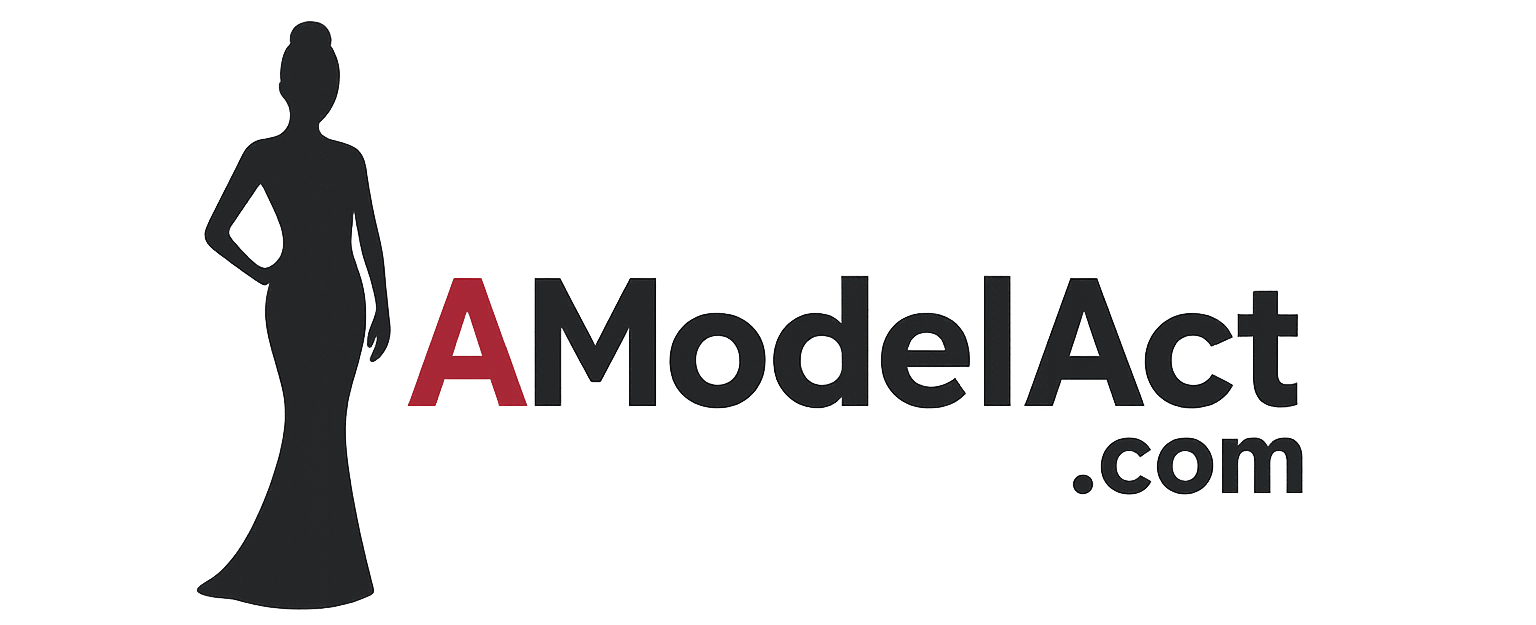Modeling is often seen as a world of flashing cameras, runway lights, and high fashion. But behind every professional model is a journey built on preparation, patience, and consistent hard work. It’s not about being discovered overnight or having perfect genetics, it’s about discipline, passion, and making the most of every opportunity. The steps to becoming a professional model are real, tangible actions that anyone can take when they commit to the path with the right mindset.
Identifying Your Strengths and Market
One of the first and most essential steps to becoming a professional model is figuring out where you fit in the industry. Modeling isn’t limited to just one type of look or body. From runway to commercial, fitness to plus-size, hand modeling to parts modeling, every niche has its own demand.
I began by observing myself with a critical but kind eye. What features stood out? What kind of brands could I realistically represent? I didn’t try to copy what was trending, I focused on what felt authentic to me and where my strengths naturally aligned. This self-awareness helped me focus my efforts and pitch myself more effectively.
Building Your Portfolio with Intention
Your portfolio is your most powerful asset. It’s what agencies and clients will use to judge your potential, professionalism, and versatility. I didn’t wait for someone to offer me a shoot, I took the initiative to collaborate with local photographers, stylists, and makeup artists to get started.
A strong portfolio includes a variety of shots: clean headshots, full-body photos, profile angles, and editorial-style images. I kept it simple at first, with natural lighting and minimal makeup, to highlight my raw features. Then I gradually added more stylized shoots that reflected the work I aspired to book.
What matters most is quality over quantity. Each image in your portfolio should say something about your skill and style. And as your career grows, your portfolio should evolve too.
Finding the Right Representation
Agencies play a major role in providing access to casting calls, brand campaigns, and career-building opportunities. But signing with the first agency you find isn’t always the best move. I researched extensively, checked agency reputations, and carefully reviewed contract terms.
I submitted digitals, simple snapshots taken in natural light, and attended open calls in my city. When I finally found an agency that believed in me, I didn’t rely on them to do all the work. I treated it like a partnership. They opened doors, but I made sure I was prepared to walk through them with confidence.
Not every model needs an agent right away, but having the right one can be a game changer when navigating the professional world.
Learning to Pose and Move with Precision
A strong visual presence doesn’t come naturally to everyone. I spent hours practicing in front of mirrors, studying top models in editorials, and filming myself to understand how I looked in motion.
Knowing your angles, being comfortable in front of the camera, and transitioning smoothly between poses are all part of the craft. The steps to becoming a professional model include mastering your body language and learning how to communicate emotion through stillness and subtlety.
Taking posing workshops or modeling classes helped me refine my skills. The more comfortable I became, the more I could adapt on set and connect with the photographer’s vision.
Developing a Confident Runway Walk
If you want to work in fashion or runway, your walk needs to be sharp, elegant, and distinct. I started practicing with heels at home, using a long hallway to mimic a runway. I recorded my walk and compared it with professional shows, making adjustments to my posture, arm movement, and pace.
Eventually, I took professional runway training to polish my technique. The key is to appear effortless while maintaining control. Each designer has a specific energy, some want fierce and fast, others prefer slow and graceful, so adaptability is everything.
Confidence comes with practice, and every opportunity to walk becomes a chance to sharpen your presence.
Taking Care of Your Body and Mind
Physical appearance plays a role in modeling, but it’s about being your healthiest self, not chasing an unrealistic standard. I focused on balanced nutrition, regular exercise, hydration, and skincare routines that kept me energized and confident.
More importantly, I worked on my mental well-being. The industry can be tough, rejection is frequent, and comparison is everywhere. I developed a strong support system, stayed grounded through journaling and meditation, and reminded myself why I started modeling in the first place.
Professionalism includes showing up physically and mentally prepared. You can’t perform your best if you’re running on empty.
Networking With Intention
Relationships are everything in the modeling industry. Some of the best jobs I landed came from referrals, photographers I clicked with, or stylists who remembered my energy on set.
I attended industry mixers, fashion events, and creative meetups. But I didn’t just hand out cards, I had genuine conversations, followed up, and stayed connected on social media. I made sure my online presence reflected my work ethic, aesthetic, and personality.
Building relationships with photographers, makeup artists, casting directors, and fellow models helped me grow faster and find more opportunities.
Staying Consistent and Reliable
You don’t need to be the most experienced model in the room, but you do need to be dependable. Showing up on time, responding to emails promptly, and being prepared for every job made me a go-to choice for repeat bookings.
I created systems for staying organized: a calendar for castings and shoots, a modeling bag packed with essentials, and a checklist for every job. These small actions built a reputation of consistency and respect.
People remember how you treat them. Being kind, professional, and adaptable has opened more doors than any one perfect photo ever could.
Handling Rejection with Grace
Rejection isn’t a setback, it’s part of the process. In fact, it’s one of the biggest steps to becoming a professional model. I’ve walked into countless castings and walked out without a callback. It stung, but it didn’t stop me.
Not every job is meant for you. Brands have specific needs, and sometimes you just don’t fit that puzzle. Instead of taking it personally, I used every no as a motivation to improve. I refined my walk, updated my portfolio, and came back stronger.
Staying resilient in a competitive industry sets true professionals apart.
Using Social Media as a Launchpad
Social media has changed modeling forever. Now, clients and agencies scout talent on Instagram, TikTok, and even YouTube. I turned my feed into an extension of my portfolio, posting clean images, behind-the-scenes stories, and collaborations that reflected my range.
Consistency, quality content, and engagement helped me grow an audience. I didn’t chase followers, I focused on showing my work, sharing my journey, and being authentic. Brands notice when you bring both modeling talent and a meaningful online presence.
Today, digital influence can enhance traditional modeling opportunities, and it’s a tool every aspiring model should use wisely.
Diversifying Your Skill Set
The most successful models aren’t one-dimensional. I explored different facets of the industry, acting, voice-over work, hosting fashion events, and it not only made me more valuable, but also more fulfilled.
Sometimes I modeled for fitness brands, other times I stepped into lifestyle shoots or commercial work. The variety kept things fresh and expanded my network.
One of the smartest steps to becoming a professional model is learning new skills. Taking acting classes, understanding lighting, or learning how to do basic makeup can give you an edge in any shoot.
Staying Educated and Informed
The modeling world is always changing. New platforms emerge, fashion trends shift, and diversity becomes more essential each year. I made it a point to stay informed, reading modeling blogs, following agency updates, and watching interviews with top models.
Knowledge gave me confidence. It helped me walk into meetings prepared, understand my rights as a model, and negotiate better terms. Staying current also helped me evolve with the industry instead of falling behind.
Being a model means being a student of the craft, the business, and the culture that surrounds it.
Growing Your Career With Purpose
Once I gained experience and built a solid reputation, I began planning for long-term growth. I thought about where I wanted to be in five or ten years. For some models, that means launching their own brand, starting a skincare line, becoming a creative director, or mentoring younger talent.
I treated my modeling work like a business. I tracked my earnings, managed my taxes, invested in new tools, and set career goals. The more I viewed myself as a professional, the more others did too.
This mindset kept me focused, motivated, and in control of my path.
Conclusion
The steps to becoming a professional model are more than just showing up with good looks. They involve commitment, training, resilience, and a deep respect for the craft. From identifying your strengths to building your portfolio, from developing your skills to navigating the highs and lows, you grow every time you show up.
Success in modeling comes to those who treat it seriously, work hard, and stay grounded. Whether you’re just beginning or looking to take your next leap, remember that every professional model once started where you are now.
Take the next step. Be consistent. And let your journey be one of purpose, presence, and passion.

